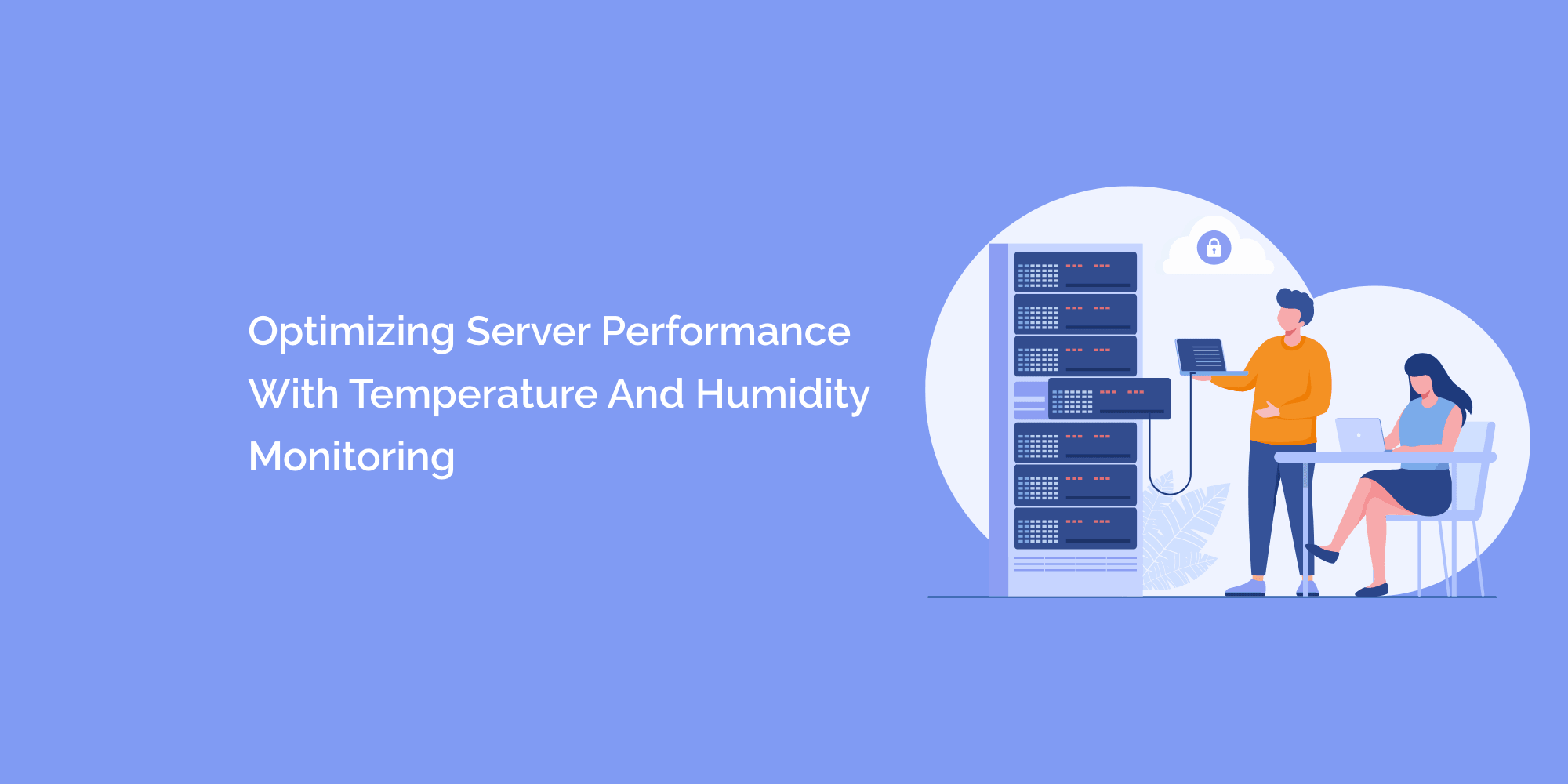In today's digital landscape, the performance and reliability of servers are paramount for businesses to thrive. Temperature and humidity monitoring is vital in optimizing server performance and preventing costly disruptions. By closely monitoring and controlling the environmental conditions in server rooms, businesses can ensure the longevity of their equipment, minimize downtime, and protect critical data. This blog will delve into the importance of temperature and humidity monitoring in optimizing server performance. We will explore how these factors impact server operation, the risks associated with inadequate monitoring, and the benefits of implementing a comprehensive monitoring system. With the right temperature and humidity monitoring strategies, businesses can achieve optimal server performance, enhance efficiency, and ensure seamless operations.
Understanding the Impact of Temperature on Server Performance
We will discuss how temperature affects server performance. High temperatures can increase server components' heat stress, causing thermal throttling, reduced performance, and even permanent damage. On the other hand, shallow temperatures can cause condensation and moisture-related issues. We will explore the ideal temperature range for servers, the consequences of temperature deviations, and how continuous monitoring helps maintain optimal conditions.
The Role of Humidity in Server Room Environments
Humidity levels also significantly impact server performance. High humidity can lead to condensation, corrosion, and electrical shorts, while low humidity can cause electrostatic discharge and static electricity-related issues. We will discuss the recommended humidity range for servers, the impact of humidity imbalances, and how humidity monitoring helps mitigate risks and optimize performance.
The Importance of Real-Time Monitoring
Real-time temperature and humidity monitoring are crucial for promptly identifying environmental changes and potential risks. We will explain the benefits of continuous monitoring, such as immediate alerts when thresholds are exceeded, allowing for quick intervention to prevent equipment damage and performance degradation. We will discuss the various monitoring solutions available, including wired and wireless systems, and highlight the advantages of remote access and monitoring.
Proactive Maintenance and Preventive Actions
Temperature and humidity monitoring enables businesses to adopt a proactive maintenance approach. Organizations can anticipate potential issues and implement preventive actions by identifying trends and patterns in environmental conditions. We will explore how data analysis and trend monitoring help optimize server performance, extend equipment lifespan, and reduce the likelihood of unplanned downtime.
Integration with Data Center Infrastructure Management (DCIM) Systems
Integrating temperature and humidity monitoring with Data Center Infrastructure Management (DCIM) systems provides comprehensive visibility into the entire infrastructure. We will discuss the benefits of integration, including centralized tracking, automated data correlation, and real-time analytics. This integration allows businesses to make data-driven decisions, optimize resource allocation, and enhance energy efficiency.
Scalability and Flexibility for Growing Infrastructures
As businesses expand their server infrastructures, scalability and flexibility become crucial factors in temperature and humidity monitoring. We will discuss the importance of choosing monitoring systems that can accommodate growing infrastructures, including the ability to add sensors, support multiple server rooms, and integrate with new equipment seamlessly. Scalable solutions ensure that monitoring capabilities can keep pace with evolving business needs.
Reducing Energy Consumption and Environmental Impact
Efficient temperature and humidity monitoring contribute to reduced energy consumption and a smaller environmental footprint. We will explore the relationship between monitoring and energy efficiency, including optimizing cooling systems based on real-time data. By closely monitoring environmental conditions and making informed adjustments, businesses can lower energy costs, decrease carbon emissions, and demonstrate their commitment to sustainability.
Compliance with Industry Standards and Regulations
Temperature and humidity monitoring is often required to comply with industry standards and regulations. We will discuss relevant standards, such as ASHRAE guidelines, and how monitoring ensures adherence to these requirements. Compliance helps protect equipment and data and ensures that businesses meet the expectations of clients, auditors, and regulatory bodies.
Choosing the Right Monitoring Solution
We will guide you in selecting the right temperature and humidity monitoring solution for businesses. Factors such as accuracy, reliability, scalability, remote access capabilities, integration options, and support services should be considered. We will discuss the importance of conducting thorough evaluations, seeking expert advice, and selecting a solution that aligns with specific business requirements and goals.
Certainly! Here are some frequently asked questions (FAQs) about optimizing server performance with temperature and humidity monitoring:
Why are temperature and humidity monitoring necessary for server performance optimization?
Temperature and humidity directly impact server performance and reliability. Monitoring these factors helps maintain optimal conditions, preventing overheating, equipment failures, and data loss.
What are the risks of inadequate temperature and humidity monitoring in server rooms?
Inadequate monitoring can lead to increased risks, such as server overheating, reduced performance, system instability, and potential hardware failures. High humidity levels can cause moisture-related issues, while low humidity can result in static electricity-related problems.
How does temperature affect server performance?
Excessive heat can lead to thermal throttling, decreased performance, and long-term damage to server components. Maintaining the appropriate temperature range helps ensure optimal server performance and longevity.
Conclusion
Temperature and humidity monitoring is crucial for optimizing server performance, mitigating risks, and ensuring uninterrupted operations. By continuously monitoring environmental conditions, businesses can prevent equipment failures, reduce downtime, and protect critical data. Implementing a comprehensive monitoring system, integrating with data center management tools, adopting a proactive maintenance approach, and considering scalability and energy efficiency contribute to the overall success of server performance optimization efforts. By choosing the proper monitoring solution and staying current with industry standards, businesses can achieve efficient and reliable server operations, ultimately leading to improved productivity, customer satisfaction, and business growth.








